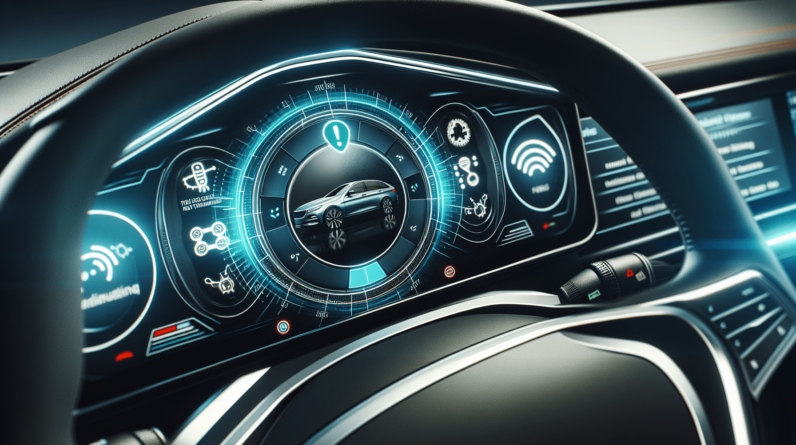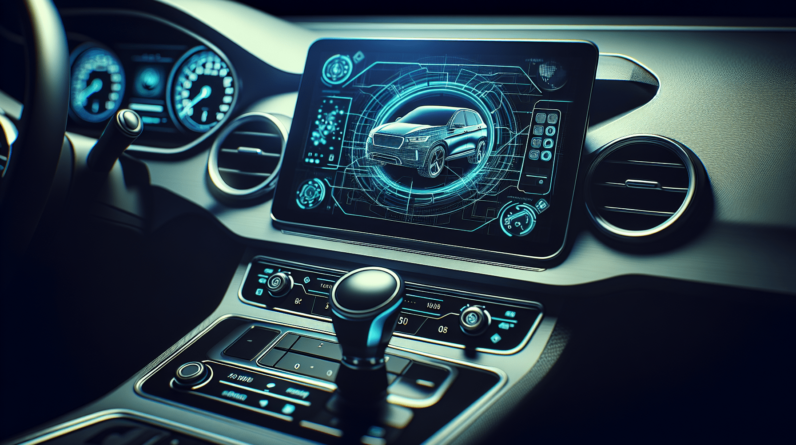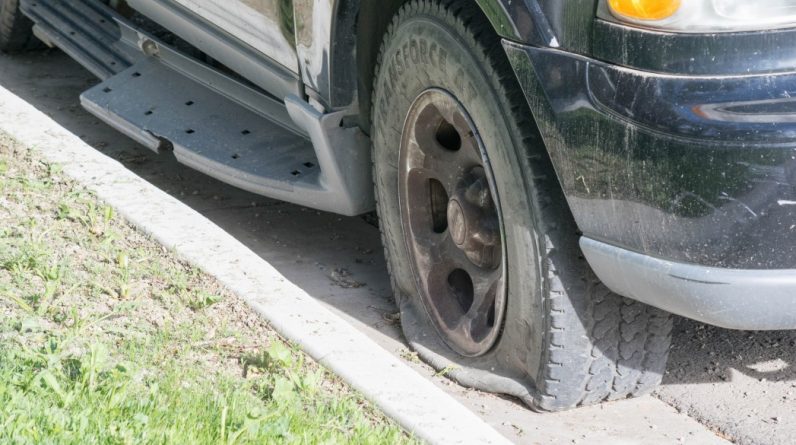
Have you ever been curious about the latest developments in automotive diagnostic technology? With cars becoming increasingly complex and technology evolving at a rapid pace, staying informed about the newest trends can greatly benefit you, whether you’re a car enthusiast, a professional mechanic, or even just a casual driver. Let’s take a closer look at the groundbreaking advancements shaping the automotive diagnostic field today.
In need of auto care? Dial 913-605-3126 for remote or in-shop services!
What is Automotive Diagnostic Technology?
Automotive diagnostic technology involves tools, techniques, and software used to diagnose issues in vehicles. By connecting to a car’s internal systems, these tools can read error codes, monitor performance data, and assist in identifying problems. This technology ensures that vehicles run smoothly and efficiently, minimizing breakdowns and extending their life span.
Importance of Accurate Diagnostics
Accurate diagnostics are crucial because they save both time and money. Imagine driving without a precise system to alert you about potential issues; you could unknowingly exacerbate problems leading to costly repairs or even a breakdown. Advanced diagnostic tools offer real-time data, which helps in the timely detection of minor issues before they escalate.
The Evolution of Diagnostic Technology
From basic handheld tools to sophisticated computerized systems, diagnostic technology has come a long way. Let’s break down its evolution to understand where we stand today.
Early Diagnostic Tools
In the early days, diagnostics were primarily mechanical. Technicians relied on intuition and experience, using simple tools to identify issues. These methods were time-consuming and not always accurate.
OBD-I and OBD-II Systems
The introduction of On-Board Diagnostics (OBD) marked a significant turning point. OBD-I started in the late ’80s and allowed basic error code readings. Then came OBD-II in the mid-’90s, which offered more standardization and a broader range of diagnostics. OBD-II systems provide codes that are uniform across different vehicle manufacturers, making the life of mechanics easier.
The Rise of Advanced Diagnostics
Today, advanced diagnostic tools integrate with various sensors and computerized systems within vehicles. These tools offer more comprehensive data, capturing everything from airbag status to fuel efficiency. The transition to advanced diagnostics represents a giant leap toward more efficient and targeted automotive maintenance.
Latest Trends in Automotive Diagnostic Technology
Now that you know the background, let’s get into the latest trends in this ever-evolving field. These trends highlight the most advanced, efficient, and user-friendly developments available today.
Wireless Diagnostics
Wireless diagnostics eliminates the need for physical connections. You can now diagnose your vehicle using Bluetooth and Wi-Fi-enabled devices.
| Feature | Description |
|---|---|
| Bluetooth Connectivity | Connects to your smartphone or tablet for real-time data. |
| Wi-Fi Compatibility | Allows remote diagnostics and updates. |
| Ease of Use | No need for cables, increasing maneuverability. |
This trend is especially beneficial for professional automotive repair shops, allowing mechanics to freely move around the vehicle while performing diagnostics.
Cloud-based Diagnostic Platforms
Cloud-based platforms provide real-time data storage and access from anywhere in the world. This becomes invaluable for fleet management and remote diagnostics.
| Advantage | Description |
|---|---|
| Remote Access | Technicians can diagnose issues from different locations. |
| Real-time Updates | Software updates happen automatically, ensuring you have the latest diagnostic capabilities. |
| Data Storage | All diagnostic data is stored securely and can be accessed anytime. |
Predictive Maintenance
Predictive maintenance uses machine learning algorithms to predict vehicle issues before they happen. It analyzes historical data to forecast wear and tear, enabling proactive repairs.
| Feature | Benefit |
|---|---|
| Machine Learning | Learns from past data to improve future predictions. |
| Real-time Alerts | Provides immediate notifications when something seems off. |
| Cost Efficiency | Reduces the likelihood of unexpected breakdowns, saving repair costs. |
Predictive maintenance keeps your vehicle in optimal shape by addressing potential issues before they become serious problems.
AI and Machine Learning in Diagnostics
Artificial Intelligence (AI) and Machine Learning (ML) are revolutionizing diagnostics. AI can analyze vast amounts of data quicker and more accurately than a human can.
| Benefit | Description |
|---|---|
| Enhanced Accuracy | AI algorithms provide more precise diagnostics. |
| Speed | Processes data faster than traditional methods. |
| Customization | Tailors diagnostics based on specific vehicle types. |
AI assists in not just diagnosing but also recommending the best course of action, enhancing overall service quality.
Augmented Reality (AR) and Virtual Reality (VR) in Diagnostics
AR and VR technology are making their mark as innovative diagnostic tools. These technologies offer immersive experiences and detailed visualizations for troubleshooting.
| Technology | Application |
|---|---|
| Augmented Reality | Overlays diagnostic data onto real-world views of the vehicle. |
| Virtual Reality | Provides a 3D environment for thorough examination. |
Imagine pointing your AR-enabled device at your engine and seeing real-time diagnostic data overlaid on the components. It simplifies complex fixes and aids in better understanding.
Enhanced User Interfaces
Modern diagnostic tools come with enhanced user interfaces (UIs) for easier operation and interpretation. These UIs offer detailed visual data and intuitive dashboards.
| Feature | Benefit |
|---|---|
| Touchscreen Displays | Easy navigation and interaction. |
| Intuitive Dashboards | Simplified views of complicated data. |
| Customization | Personalize your interface for your specific needs. |
Enhanced UIs make it simpler for both novice and professional users to understand what’s happening under the hood.
Integration with Automotive Apps
Integration with apps has taken diagnostics to another level. You can now monitor your vehicle’s health directly from your smartphone.
| Benefit | Application |
|---|---|
| Convenience | Check your vehicle’s status from anywhere. |
| Real-time Monitoring | Receive alerts and updates in real-time. |
| Ease of Use | User-friendly app interfaces for quick understanding. |
These apps often include additional features like service reminders, maintenance schedules, and driving tips to help you keep your vehicle in the best condition.
Telediagnostics
Telediagnostics allows for remote diagnostics through telecommunications. It’s particularly useful for fleet management and remote assistance.
| Feature | Description |
|---|---|
| Remote Analysis | Technicians can diagnose from a distant location. |
| Real-time Monitoring | Constant data flow for up-to-date analysis. |
| Flexibility | Suitable for various types of vehicles in different locations. |
Telediagnostics ensures that even if you’re miles away from a workshop, you can still get accurate diagnostics and advice.
Autonomous Vehicle Diagnostics
Autonomous vehicles come with their own set of diagnostic challenges and solutions. These vehicles are equipped with advanced sensors and systems requiring specialized diagnostic tools.
| Feature | Benefit |
|---|---|
| Advanced Sensors | Collect a wide range of data for comprehensive diagnostics. |
| Real-time Processing | Autonomous systems can perform self-diagnostics on the go. |
| Specialized Tools | Tailored diagnostic tools for unique autonomous systems. |
As autonomous vehicles become more common, expect advancements in this area to continue.
Blockchain Integration
Blockchain technology provides a secure, immutable way to store diagnostic and vehicle history. This is becoming increasingly relevant for maintaining vehicle integrity and transparency.
| Advantage | Description |
|---|---|
| Data Security | Ensures information is tamper-proof. |
| Transparency | Easy tracking of a vehicle’s diagnostic history. |
| Trustworthiness | Builds trust between buyers and sellers in the used car market. |
Blockchain integration in diagnostics ensures that you have a reliable history of your vehicle, which is beneficial for resale and maintaining service records.
Practical Applications of Advanced Diagnostics
Let’s explore how these trends translate into practical applications. These real-world examples will give you an idea of how advanced diagnostics are improving everyday automotive experiences.
Professional Workshops
For automotive repair shops, advanced diagnostics tools mean faster, more accurate repairs and increased customer satisfaction. Wireless and cloud-based tools enable technicians to work more efficiently.
Fleet Management
Fleet managers can significantly benefit from predictive maintenance and telediagnostics. These technologies help keep fleets running smoothly, reducing downtime and operational costs.
DIY Enthusiasts
For those who enjoy working on their cars, enhanced interfaces and app integrations provide a more accessible and enjoyable experience. These tools offer professional-level diagnostics without requiring extensive expertise.
Roadside Assistance
Roadside assistance services can offer immediate, accurate diagnostics thanks to wireless and telediagnostics technologies. This ensures that issues are quickly identified and resolved, reducing wait times and stress.
Future of Automotive Diagnostics
What does the future hold for automotive diagnostic technology? While it’s hard to predict, several trends hint at exciting possibilities.
Fully Integrated Systems
Future diagnostic tools might offer fully integrated systems that communicate seamlessly. Imagine a system where your diagnostics are connected with service providers for automatic scheduling of maintenance appointments.
Enhanced AI Capabilities
Enhanced AI capabilities could mean even faster, more accurate diagnostics. AI could eventually learn from every vehicle it interacts with, continually improving its diagnostic abilities.
Wider Adoption of AR/VR
As AR and VR technologies become more affordable, their adoption in everyday diagnostics is likely to grow, making it easier for both professionals and DIY enthusiasts to troubleshoot and fix issues.
Greater Data Analytics
With vehicles generating more data than ever, greater emphasis on data analytics could help in more comprehensive diagnostics. This will also pave the way for more personalized vehicle care.
Final Thoughts
Staying updated with the latest trends in automotive diagnostic technology can be incredibly beneficial. From wireless and cloud-based diagnostics to AI and machine learning, these advancements are making vehicle maintenance more efficient and accurate. Whether you’re a professional, a car owner, or a DIY enthusiast, understanding these trends will help you make informed decisions and keep your vehicle running at its best.
Do you find these latest trends as exciting as we think they are? Understanding and utilizing these advancements can transform how you approach vehicle maintenance, saving you time, money, and potential headaches down the road. Isn’t that something worth exploring?
Need auto care? Call 913 605-3126 for remote or in-shop services!







